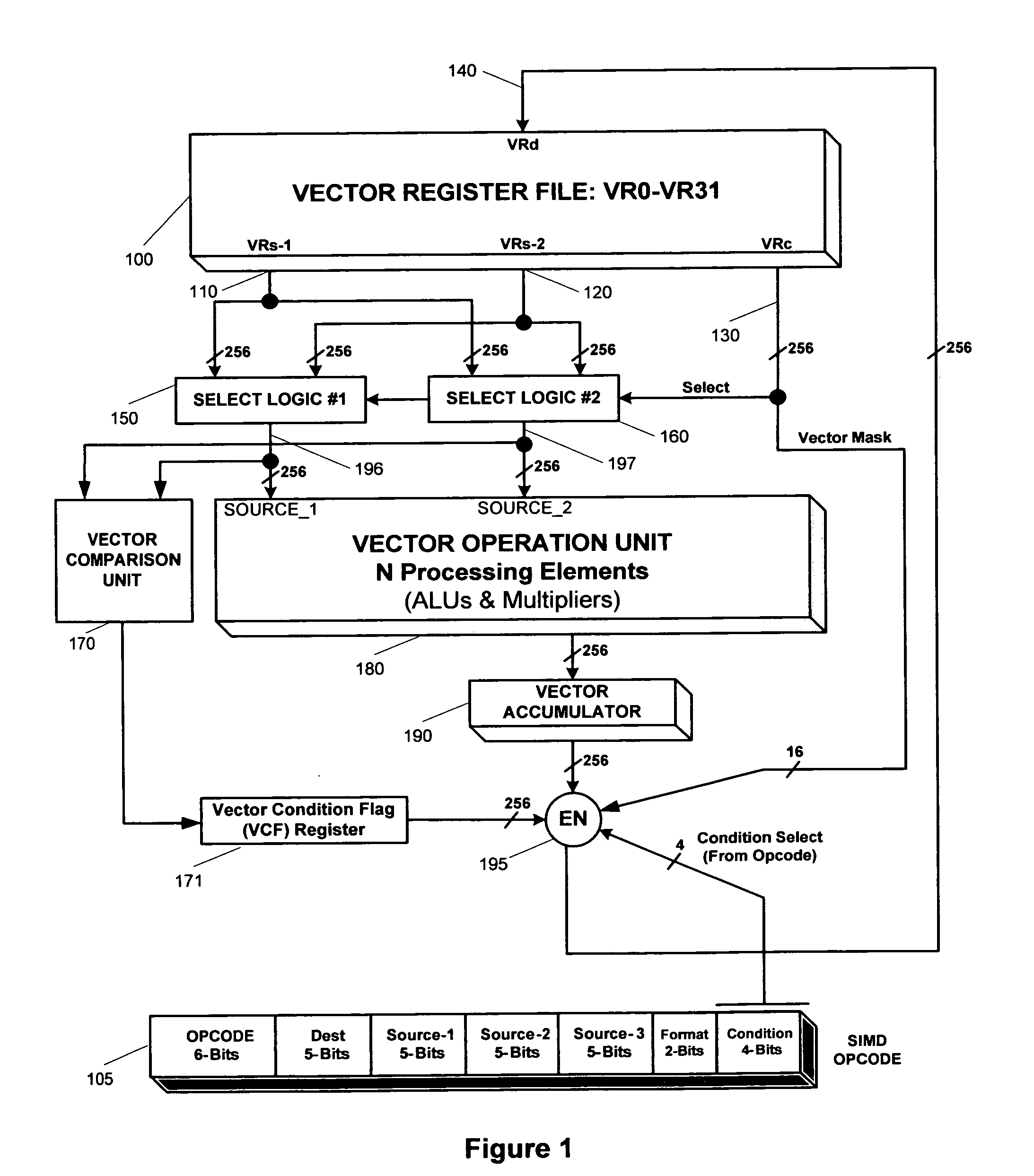Method for variable length opcode mapping in a VLIW processor
a variable length opcode and processor technology, applied in the field of processor chips, can solve the problems of inability to add another bit to the signal grouping of instruction, inability to support multiply operation, and waste of program memory by containing nop or vnop, so as to reduce the waste of program memory, reduce program memory, and save program memory.
- Summary
- Abstract
- Description
- Claims
- Application Information
AI Technical Summary
Benefits of technology
Problems solved by technology
Method used
Image
Examples
Embodiment Construction
[0027]The SIMD unit consists of a vector register file 100 and a vector operation unit 180, as shown in FIG. 1. The vector operation unit 180 is comprised of plurality of processing elements, where each processing element is comprised of ALU and multiplier. Each processing element has a respective 48-bit wide accumulator register for holding the exact results of multiply, accumulate, and multiply-accumulate operations. These plurality of accumulators for each processing element form a vector accumulator 190. The SIMD unit uses a load-store model, i.e., all vector operations uses operands sourced from vector registers, and the results of these operations are stored back to the register file. For example, the instruction “VMUL VR4, VR0, VR31” multiplies sixteen pairs of corresponding elements from vector registers VR0 and VR31, and stores the results into vector register VR4. The results of the multiplication for each element results in a 32-bit result, which is stored into the accumu...
PUM
 Login to View More
Login to View More Abstract
Description
Claims
Application Information
 Login to View More
Login to View More - R&D
- Intellectual Property
- Life Sciences
- Materials
- Tech Scout
- Unparalleled Data Quality
- Higher Quality Content
- 60% Fewer Hallucinations
Browse by: Latest US Patents, China's latest patents, Technical Efficacy Thesaurus, Application Domain, Technology Topic, Popular Technical Reports.
© 2025 PatSnap. All rights reserved.Legal|Privacy policy|Modern Slavery Act Transparency Statement|Sitemap|About US| Contact US: help@patsnap.com



